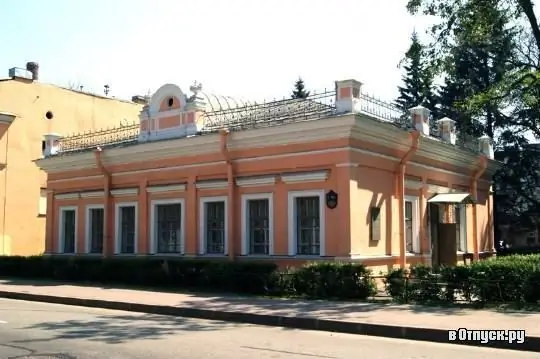
Description of the attraction
The Narvskaya Zastava Museum was opened in the summer of 1990. The main task of the museum is the development of historical and regional studies on the southern coast of the Gulf of Finland (the territory of the Kirovsky district of St. Petersburg). These lands have a rich history, which is reflected in the expositions of the museum. The expositions tell about the nature of these places; indigenous peoples who lived here; about the bloody battles that allowed Russia to take root in the Baltic and build the glorious city of Peter, the revolutionary period, the blockade, the war against German fascism and the Soviet period.
Initially, the Peterhof road was the main city artery, along which Northern Palmyra, Kronstadt and the suburbs of Peterhof received goods, and road traffic was carried out. Plots near it were called by contemporaries an aristocratic suburb, because of the built royal residence and houses of the first nobles of the king. In total, about a hundred estates and country palaces were built here. The exposition of the museum has models: "Yekateringof" (the royal residence, built in the 16th century); "Ulyanki" (dacha-estate); "Roller Coaster" (Pavilion of the era of Catherine, surprising with its architectonics and original purpose). In addition to models, real costumes, dresses, hats, dresses, household items dating back to the middle and the end of the 19th century give an idea of those times.
The main building of the museum (erected in 1899 and belongs to the architectural monuments of federal significance) acquaints visitors with the new history of the Narva outpost. Earlier, the building of the museum housed offices for various purposes and warehouses. In 1917, it hosted a meeting of the fourth congress of the RSDLP (b), this memorable event was immortalized with the help of an installed memorial plaque.
The exposition of the museum acquaints visitors with Avraamy Mikhailovich Ushkov (a well-known benefactor), prominent representatives of the entrepreneurship of the Narvskaya Zastava. He financed the construction of a hospital, a school, a zemstvo school. With his money, a church and an orphanage for children were built. In addition to well-known and successful townspeople, the exposition of the museum also presents the life of ordinary St. Petersburg workers who belonged to different social levels. Here you can see many genuine items that were previously used by both highly skilled and unskilled workers.
The revolutionary events of 1905-1917 were also reflected in the museum's exposition and are represented by a large set of authentic materials. Among which there are materials that took place within these walls of the ninth meeting of the sixth congress of the RSDLP (b). The Soviet period is represented by materials about the Kirovsky region during the war, when the Kirovsky region was an outpost of Leningrad. Peacetime is represented by portraits of the heroes of labor, models of ships that were built on the stocks of the Severnaya Verf, models of nuclear and diesel submarines designed and developed by graduates of Leningrad Naval Universities. Here you can also get acquainted with household items donated to the museum by ordinary residents of the Kirovsky district.
Much research, scientific and cultural work is carried out in the museum. Books and articles on regional studies are published. Museum workers take an active part in all events held in the city and Russia, such as "Children's Days in St. Petersburg", "Intermuseum" and "Night of Museums".
More than 33,000 items are kept in the collections of the museum, consisting of several funds: a fund of photographs, a fund of documents, a fund of numismatics and a clothing fund. The collections of photographs and documents are the special pride of the museum. They fully reflect the entire history of the area, starting from the 19th century.






